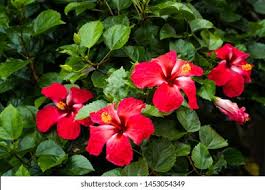Seller:
- Availability by 3 - 5 days
- 7 Days Return Policy
- Cash on Delivery Available
Select Quantity:
| Category Name: | Timbers |
| Botanical Name: | Hibiscus |
| Family: | Malvaceae |
| Time of Planting: | January, February |
| Growth Rate: | medium |
| Plant Life Cycle: | 10 years |
| Soil pH: | 7 |
| Cultural Practice Irrigation: | Regular watering, especially during dry spells |
| Cultural Practice Fertigation: | Organic |
| Cultural Practice Pruning: | Required |
| Uses of Plants Fruits & Flowers: | Flowers are used for medicine |
| Uses of Plants Stem & Bark: | No use |
| Uses of Plants Roots & Leaves: | No use |
| Purpose of Plant: |
Decorative: Hibiscus plants are known for their showy flowers and are often used for decoration. Medicinal: Hibiscus has been used for centuries in traditional medicine to treat a variety of ailments, including liver problems, high blood pressure, and infections. It's high in antioxidants and may help with weight loss, reducing bacteria and cancer cell growth, and supporting heart and liver health. Food: Hibiscus is used in salads, jams, and other foods. Colorant: The petals of the hibiscus flower can be boiled to extract a red dye used to color fabrics and clothes. Ecological: Hibiscus flowers provide nectar for pollinators like hummingbirds. Cultural symbol: In India, the hibiscus plant is a cultural symbol that represents purity, beauty, devotion, and the cycle of life. |
Add a review
| Name | Category | Causes | Causing Month | Prevention |
|---|








0 Review For Lal Gudhal